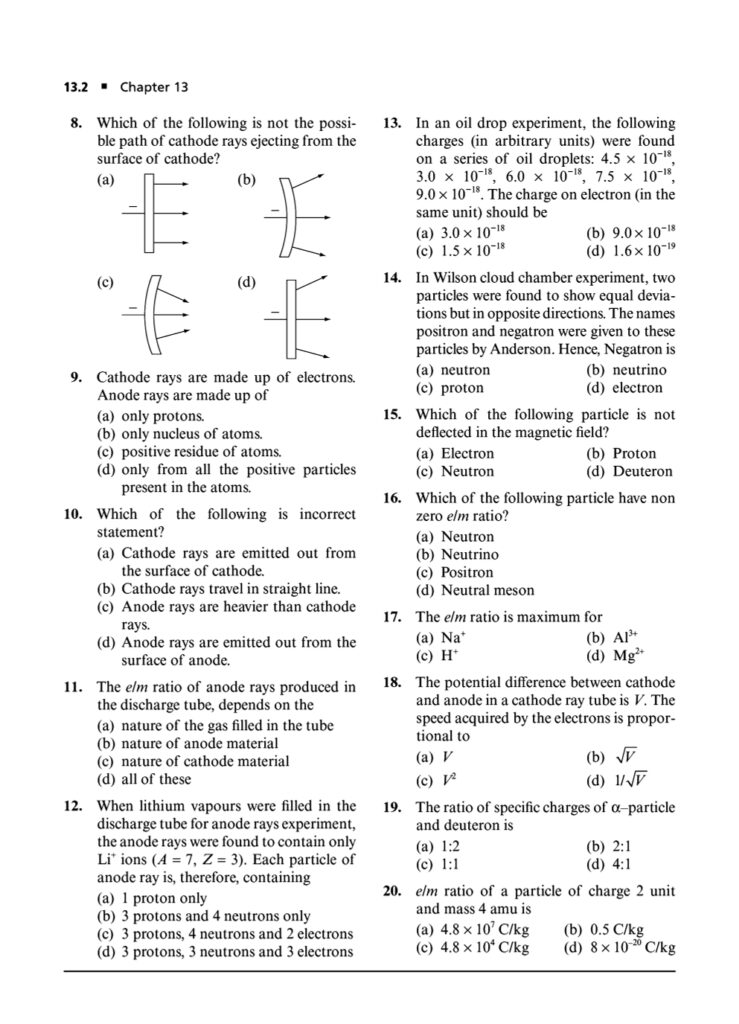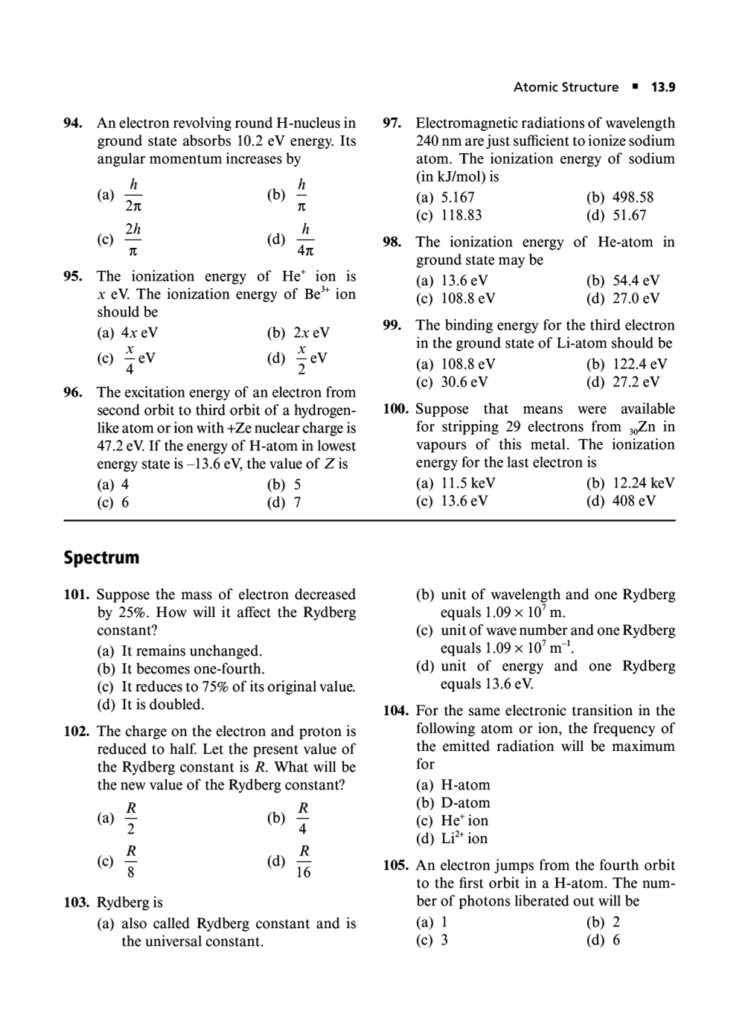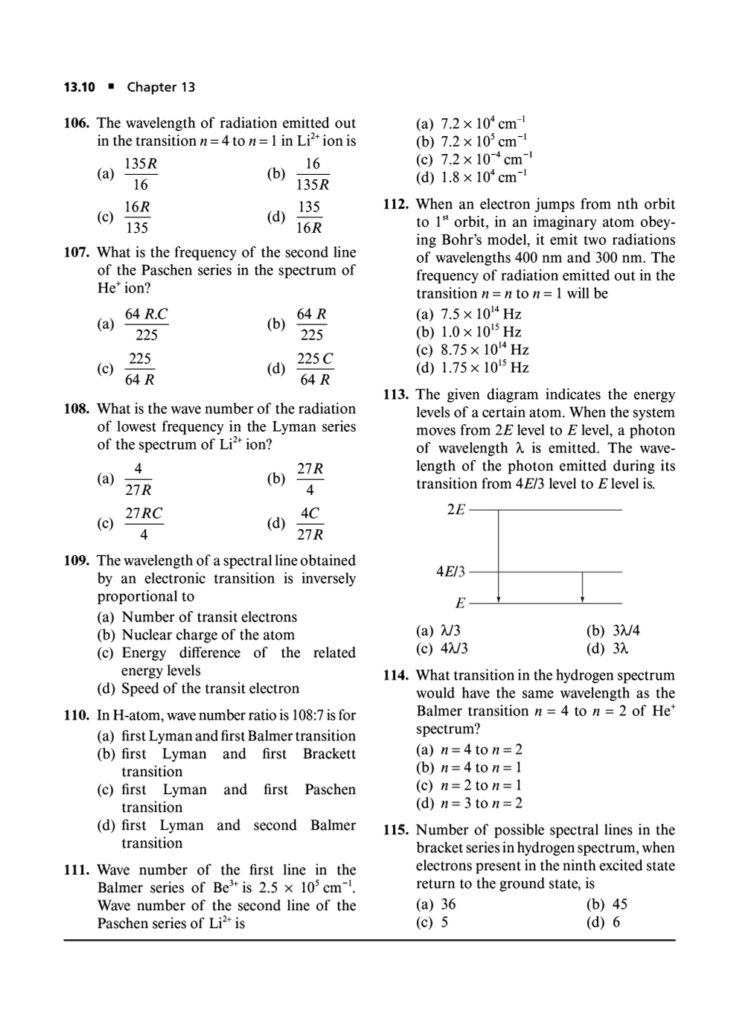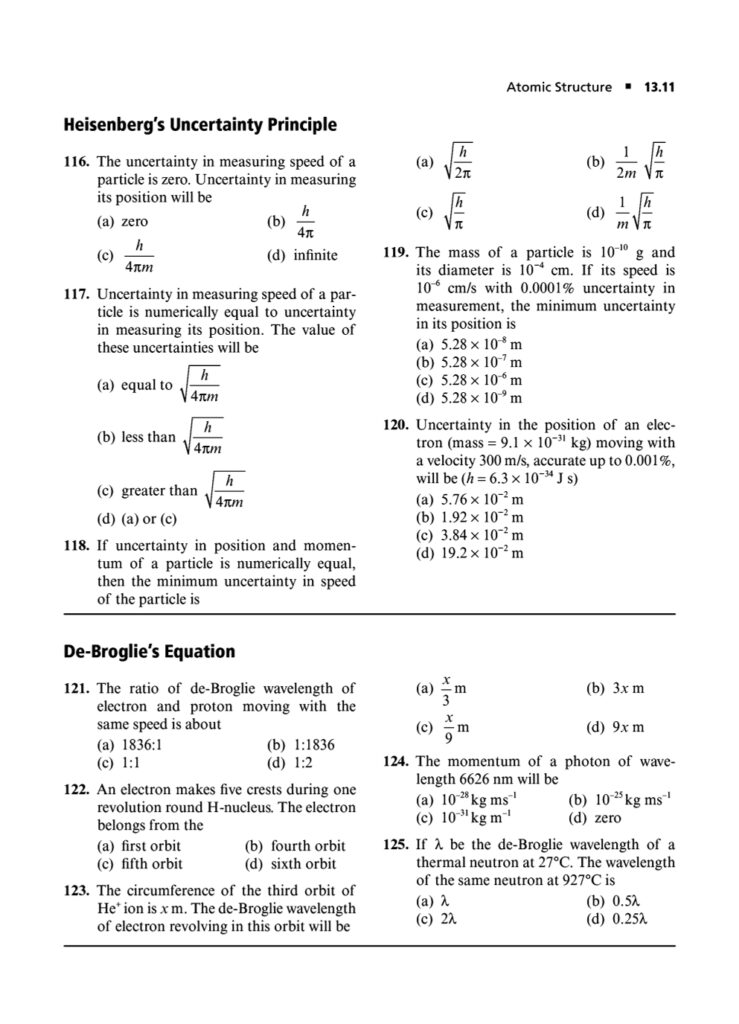The atomic structure chapter is a cornerstone of chemistry, particularly for the JEE Main examination. It delves into the fundamental building blocks of matter, exploring the arrangement of subatomic particles, electronic configurations, and the quantum mechanical models that govern atomic behavior. A strong grasp of these concepts is crucial for success in the exam, as they form the basis for understanding chemical bonding, periodic trends, and various other topics. Expect questions that test your understanding of:
- Bohr’s model and its limitations: Including calculations of energy levels, radii, and spectral lines.
- Quantum numbers and atomic orbitals: Understanding the significance of principal, azimuthal, magnetic, and spin quantum numbers, and their relation to orbital shapes and energies.
- Electronic configuration and Hund’s rule: Applying the Aufbau principle, Pauli exclusion principle, and Hund’s rule to determine the electronic configuration of atoms and ions.
- Photoelectric effect and de Broglie hypothesis: Understanding the wave-particle duality of matter and its implications.
- Spectral lines and the Rydberg formula: Calculating wavelengths and frequencies of spectral lines.
These questions often involve numerical calculations, theoretical concepts, and the ability to apply them to various scenarios. Mastering atomic structure requires a solid foundation in the underlying principles and consistent practice with diverse problem types.































